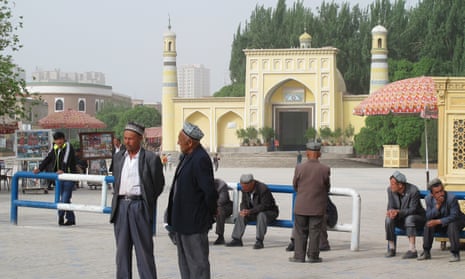Growing a beard, wearing a veil or accidentally visiting a foreign website were among the justifications for sending Uighurs to China’s notorious detention camps, according to a leaked database, casting doubt on Beijing’s claim to be conducting a re-education campaign to root out extremism.
The newly revealed database – known as the “Karakax list” after the county where it was compiled – comprises 137 pages and exposes in detail the main reasons for the detention of more than 300 people on the edge of Xinjiang’s Taklamakan desert.
On the database, detainees and their families are tracked and classified by rigid, well-defined categories. Households are designated as “trustworthy” or “not trustworthy,” and their attitudes are graded as “ordinary” or “good”. Families have “light” or “heavy” religious “atmospheres”, and the document keeps count of how many relatives of each detainee are in prison or have been sent to a “training centre”.
Officials used these categories to determine how suspicious a person was, even if they had not committed any crimes.
Other reasons listed for internment include “minor religious infection”, “disturbs other persons by visiting them without reasons”, “relatives abroad”, “thinking is hard to grasp” and “untrustworthy person born in a certain decade”. The last seems to refer to younger men, according to an analysis of the data by Adrian Zenz, an expert on the detention centres who compiled a report on the Karakax list.
“It underscores the witch-hunt mindset of the government, and how the government criminalises everything,” said Zenz.
The most recent date in the document is March 2019. The detainees listed come from Karakax County, a traditional settlement of about 650,000 people where more than 97% of the population are Uighur. The list was corroborated through interviews with former Karakax residents, Chinese identity verification tools, and other lists and documents seen by the Associated Press.
The database indicates much of the information is collected by teams of cadres stationed at mosques, sent to visit homes and posted in communities. This information is then compiled in a dossier called the “three circles”, encompassing their relatives, community, and religious background.
It showed that Karakax officials also explicitly targeted people for activities that included going abroad, getting a passport, installing foreign software or clicking on a link to a foreign website.

The database also emphasises that the Chinese government focused on religion as a reason for detention — not just political extremism, as authorities claim, but ordinary activities such as praying, attending a mosque, or even growing a long beard. It also shows the role of family: People with detained relatives were far more likely to end up in a camp themselves, uprooting and criminalising entire families.
Similarly, family background and attitude is a bigger factor than detainee behaviour in whether they are released.
“It’s very clear that religious practice is being targeted,” said Darren Byler, a University of Colorado researcher studying the use of surveillance technology in Xinjiang. “They want to fragment society, to pull the families apart and make them much more vulnerable to retraining and reeducation.”
The leak of the database follows the release in November of a classified blueprint on how the mass detention system really works. The blueprint obtained by the International Consortium of Investigative Journalists, showed that the centres were in fact forced ideological and behavioural re-education camps run in secret. Another set of documents leaked to the New York Times revealed the historical lead-up to the mass detention.
China has sought for decades to control the far western region of Xinjiang, where the native Uighurs have long resented Beijing’s heavy-handed rule.
After militants set off bombs at a train station in Xinjiang’s capital in 2014, President Xi Jinping launched a so-called “People’s War on Terror”, transforming Xinjiang into a digital police state.
The Xinjiang regional government did not respond to faxes sent by AP requesting comment on the latest database leak. Asked whether Xinjiang was targeting religious people and their families, foreign ministry spokesman Geng Shuang said “this kind of nonsense is not worth commenting on”.
Beijing has said before that the detention centres are for voluntary job training, and that it does not discriminate based on religion.
Associated Press contributed to this report
